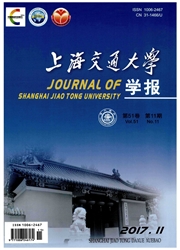

 中文摘要:
中文摘要:
实测的缸盖表面振动速度信号中包含较大幅值的低频成分,为了研究此低频信号的成因及其与燃烧激励响应信号的耦合关系,以195柴油机为对象,建立了缸盖-机体虚拟样机仿真模型,对产生低频扰动的激励源进行了分析.研究结果表明:实测振动速度信号中的低频成分主要由往复惯性力和摩擦力引起;高通滤波方法对振动速度信号中与燃烧过程特征点出现位置有关的信息没有明显影响,但会造成与幅值相关信息的较大损失;300℃A之前的振动速度信号主要由往复惯性力激励和摩擦力激励响应信号构成.
 英文摘要:
英文摘要:
As the vibration signal measured on engine cylinder head contains low-frequency component with large amplitude,to investigate the cause of the low-frequency component and its coupling relationship with combustion excitation response signal,a simulation model of the cylinder head and the engine block representing the type of 195-diesel engine was established and used to analyze the excitation sources of the low-frequency component.Research results show that the low-frequency component in the vibration signals is mainly caused by the reciprocating inertia force and the friction force of the piston.Filtering the vibration signal with high-pass filter method has no obvious effects on identifying the start of combustion,the location of the maximum pressure rise rate and the location of the peak pressure,but would cause a greater loss of amplitude dependent information.The vibration signal before 300 ℃A is mainly excited by the reciprocating inertia force and the friction force.
 同期刊论文项目
同期刊论文项目
 同项目期刊论文
同项目期刊论文
 期刊信息
期刊信息
